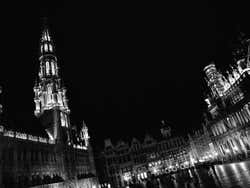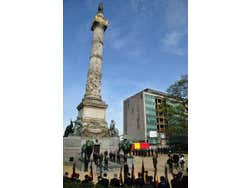
History of Brussels
Brussels has a turbulent history: get to know the history of the Belgian capital from its foundation to its role as the headquarters of the European Union.
Historians have varied opinions on the exact date of the foundation of Brussels; therefore, the date remains uncertain. In the seventh century the Bishop of Cambrai commissioned the construction of a chapel on the site where Brussels is currently located, on one of the islands in the River Seine. After the construction was completed, a hamlet formed around the temple known as Broeksele.
The official founding of Brussels is usually situated in 979, the year when the Duke of Lower Lorraine instructed the construction of a fortress on behalf of Otto II, Holy Roman Emperor who wanted to protect this part of his kingdom.
The fortress on the small hill of Coudenberg was built between the eleventh and twelfth century and during this period the Duke of Brabant made it his residence. This is when Brussels began to grow and attracted more citizens to the town.
The city began to expand and became an important commercial centre thanks to it being located on the route from Bruges to Cologne. It became one of the towns to organize the annual Champagne fairs, which were trading fairs held in towns in Northern Europe. At the end of the seventeenth century it became part of the Hanseatic League (a commercial confederation).
The Middle Ages
First cloths and then linen and tapestries gave way to an upper class in Brussels, known as Lineages. These were wealthy families that shared the municipal power in the region (very similar to how the towns were organized in the Crown of Castile) and were given certain commercial and political privileges by the Duke of Brabant.
There is evidence that in 1306 there were seven different lineages that made up the aristocracy of Brussels. The various lineages would choose an échevin and jury each year after having heard the thoughts of the Duke of Brabant's representative.
The échevin and jury would change year after year to prevent one of the lineage families having power over the others. This evidently did not stop them from quarrelling and during the fifteenth century, the confrontations between the Van Lombeke and the Van den Heetvelde families became renowned.
The Lineages refused to share their power with the lower classes and the artisans. As a consequence, at the beginning of the fourteenth century the weavers, artisans, dyers, those that cleaned the wool and all the tradespeople of Brussels revolted against these seven families.
The uprising led the Lineages to concede the tradespeople the right to form guilds and take certain part in the decisions of the city.
In 1421 a municipal constitution was passed whereby the power was shared between the seven Lineages and the guilds that were divided into Nine Nations.
Spanish Brussels
When the County of Brabant and Duchy of Burgundy became one, Brussels became the region’s capital. In 1477 Brussels became part of the Spanish Empire and it became the seat of the governors of Flanders.
In 1609 the northern United Provinces became independent and Brussels became the capital of the Habsburg Netherlands. Curiously, the emperor Charles V abdicated as King of Spain in Brussels.
Brussels played an important role in the holy wars. During the thirteenth century it was one of the focus points of the heresy of the Beghards. During this period Brussels became renowned for its tolerance and this is why Desiderius Erasmus decided to move to the city. In later years, Lutheranism and Calvinism would become widely accepted in Brussels.
In 1567 the political and religious conflicts spread throughout Flanders and Philip II of Spain sent the Duke of Alba to put an end to these clashes and became famous for the relentless repression he carried out in the region. He instituted the Council of Troubles to punish the leaders of the political and religious troubles in the Netherlands. This council caused a great malaise among the inhabitants and was one of the causes of the Eighty Years’ War or the “Dutch War of Independence”.
When William I, Prince of Orange revolted against Spain, helped by the pirates, Brussels supported the independence of the United Provinces.
The city sunk into an economic crisis due to the many years of political instability and didn’t recover until Isabella Clara Eugenia, daughter of Philip II of Spain married the ruling Archduke of Austria, Albert VII and resided in Brussels.
The Treaty of Utrecht was signed in 1713 and Brussels was handed over to Austria.
Independence and Brussels as the capital of Belgium
In 1789 the Belgians revolted against the Habsburg Emperor Joseph II and established the United Belgian States a year later. Less than ten years later, in 1795, the Napoleonic troops captured the city and annexed it to France until 1814.
In 1815 Napoleon was defeated in Waterloo and Brussels joined the United Kingdom of the Netherlands.
On 25 August 1830, the Belgian revolution took place in Brussels, which led to the country’s independence. The first king of the Belgians, Leopold I, was crowned in 1831 and the city was chosen capital of Belgium.
Brussels has grown throughout the centuries, except during World War I and II, when the German troops occupied the city. The city's importance is visible as it was chosen as the home of three World Fairs, the first in 1897, then in 1910 and lastly in 1958. During the last Expo, the Atomium was built, which has become along with the Manneken Pis, the two main symbols of Brussels.
Brussels is presently an extremely cosmopolitan city and is home to the European Parliament, the European Commission and the European Council. Moreover, it is also the seat of NATO and has become an arbiter between the irreconcilable Flanders and Wallonia.


